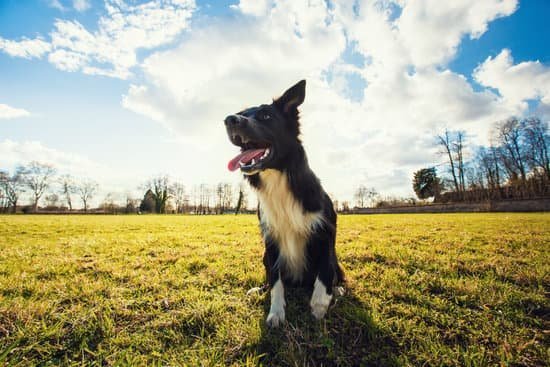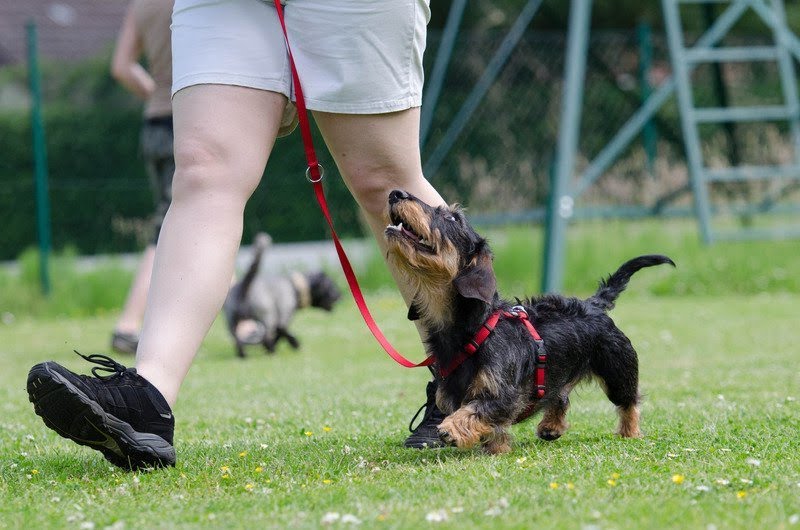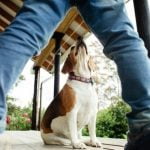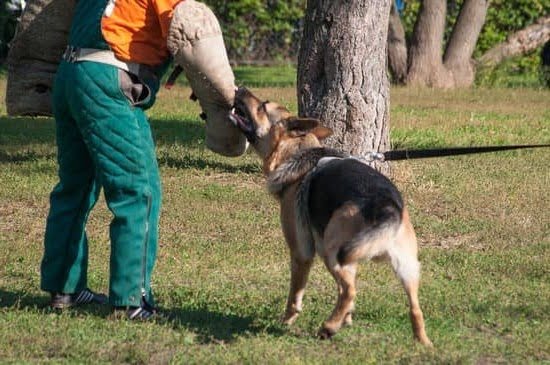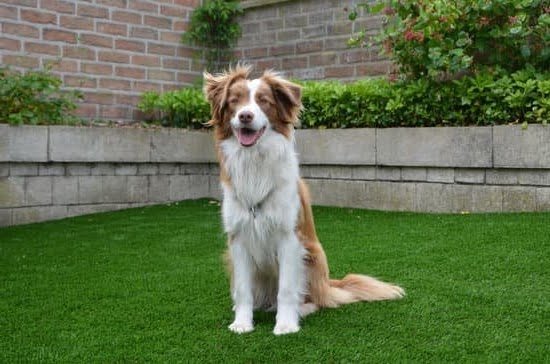Dogs are naturally social animals, but sometimes conflicts can arise between them leading to fights. In this article on how to train dogs not to fight, we delve into the root causes of dog aggression and explore effective strategies for preventing these confrontations. Understanding why dogs exhibit aggressive behavior is crucial in addressing and managing it.
Aggression in dogs can be triggered by various factors such as fear, territoriality, or dominance issues. By identifying these triggers early on, dog owners can take proactive steps to prevent potential conflicts before they escalate into fights. It is essential for pet owners to recognize the signs of aggression in their dogs and learn how to respond appropriately to diffuse tense situations.
Establishing a strong leadership role as a dog owner is key in shaping your pets’ behavior and promoting harmony among them. By practicing effective communication, consistent training methods, and setting clear boundaries, you can create a balanced and peaceful environment for your furry companions. Let’s explore further the techniques and approaches that can help curb dog aggression and foster positive interactions between dogs.
Identifying the Triggers That Can Lead to Dog Fights
Dogs are social animals, but they can sometimes exhibit aggressive behavior towards other dogs. It is essential for dog owners to be able to identify the triggers that can lead to dog fights in order to prevent such situations. One common trigger is resource guarding, where a dog becomes defensive over items like food, toys, or territory. Recognizing signs of resource guarding early on can help prevent conflicts between dogs.
Another trigger for dog fights is fear or anxiety. Dogs may become aggressive when they feel threatened or scared. Understanding your dog’s body language and behavior cues can help you assess when they are feeling uncomfortable and intervene before a fight breaks out. Additionally, lack of proper socialization can also lead to aggression in dogs. Exposing your dog to different environments, people, and other dogs from a young age can help them learn appropriate social behaviors and avoid conflicts.
To train dogs not to fight, it is crucial for dog owners to work on desensitization and counterconditioning techniques. This involves gradually exposing the dogs to their triggers in a controlled environment while rewarding calm behavior. Through consistent training and positive reinforcement, dogs can learn alternative ways to react to their triggers instead of resorting to aggression. Seeking professional help from a certified dog trainer or behaviorist may be necessary for more severe cases of aggression in dogs.
| Triggers | Prevention Techniques |
|---|---|
| Resource Guarding | Recognize signs early & address behavior |
| Fear or Anxiety | Understand body language & provide support |
| Lack of Socialization | Expose dogs to various environments & interactions |
Establishing a Strong Leadership Role as a Dog Owner
One way to establish yourself as the leader is by practicing obedience training with your dogs regularly. This not only helps in reinforcing your position but also improves communication between you and your pets. Dogs that understand and respect commands are more likely to follow your lead and look up to you as their leader. Additionally, providing structure in their daily routines such as feeding times, walks, and playtime can help reinforce the idea of authority within the household.
Consistency is key when establishing a leadership role with your dogs. It is essential that all members of the family or household follow the same set of rules and guidelines when it comes to interacting with the dogs. Mixed signals can confuse pets and lead to challenges in establishing authority. By being consistent in your approach and expectations, you can create a cohesive environment where dogs feel secure and less inclined to engage in aggressive behaviors towards one another.
Implementing training techniques that focus on positive reinforcement rather than punishment is also beneficial in fostering respect and cooperative behavior among dogs. Rewarding good behavior with treats, praise, or playtime reinforces the idea that calm and friendly interactions are desirable. By using positive reinforcement methods consistently, you can encourage harmonious relationships between your dogs while minimizing the risk of conflicts or fights breaking out.
| Establishing Leadership Role Tips | Benefits |
|---|---|
| Practice obedience training regularly | Improves communication and reinforces authority |
| Provide structure in daily routines | Helps establish order and clarity for pets |
| Be consistent with rules across all family members | Promotes unity and reduces confusion for pets |
| Use positive reinforcement training techniques | Fosters cooperative behavior while strengthening bonds |
Socialization Techniques to Prevent Dog Aggression
Teaching Appropriate Social Skills
The key to preventing dog aggression lies in teaching dogs appropriate social skills from a young age. Socialization is crucial for puppies to learn how to interact with other dogs, animals, and people in a positive manner.
By exposing them to various environments, experiences, and individuals, puppies can become well-adjusted adults who are less likely to display aggressive behavior towards others. Proper socialization can help dogs feel comfortable and confident in different situations, reducing the chances of conflicts with other dogs.
Organized Playgroups
Organized playgroups are another effective way to prevent dog aggression by providing structured interactions with other dogs. These playgroups offer controlled environments where dogs can engage in supervised play while learning appropriate social cues and behaviors. Through these organized sessions, dogs can build positive relationships with their canine counterparts, develop communication skills, and learn how to resolve conflicts peacefully without resorting to aggression. Encouraging healthy play and positive interactions during these sessions can greatly contribute to preventing future aggressive behavior.
Positive Exposure to Different Stimuli
Exposing dogs to new stimuli in a positive way can also help prevent dog aggression. Gradually introducing them to various sights, sounds, smells, and textures can desensitize them to potentially triggering situations that may lead to fights.
By creating positive associations with these stimuli through treats, praise, and rewards, dogs learn to remain calm and composed when faced with unfamiliar or challenging circumstances. This method of exposure can help build their confidence and reduce the likelihood of reacting aggressively towards perceived threats or stressors.
By incorporating these socialization techniques into your dog’s training regimen, you can significantly decrease the risk of dog aggression and promote healthier relationships between your furry friends. Remember that consistency is key in reinforcing positive behaviors and fostering a peaceful coexistence among dogs. With patience, dedication, and the right approach towards socialization, you can effectively train your dogs not to fight and instead enjoy a harmonious companionship based on mutual respect and understanding.
Positive Reinforcement Training Methods to Promote Harmonious Relationships Between Dogs
Positive reinforcement training methods are essential in promoting harmonious relationships between dogs to prevent fights and enhance overall behavior. By using positive reinforcement, you can encourage good behavior and discourage negative actions in your dogs. Here are some effective positive reinforcement techniques that can help train dogs not to fight:
- Reward-based training: Use treats, praise, or toys to reward your dogs for demonstrating good behavior such as obeying commands or interacting peacefully with other dogs.
- Clicker training: Utilize a clicker as a marker to signal when your dog has done something desirable, followed by rewarding them with a treat. This method helps reinforce positive actions.
- Training games: Incorporate fun games like hide-and-seek or agility courses into your training sessions to engage your dogs mentally and physically while reinforcing good behavior.
Consistency is key when using positive reinforcement techniques. It is important to reward desired behaviors every time they occur, gradually reducing the frequency of treats as the behavior becomes more consistent. With patience and repetition, you can effectively train your dogs not to fight through positive reinforcement.
In addition to using positive reinforcement methods, it is crucial for dog owners to monitor their dogs’ interactions closely and intervene if any signs of aggression arise. By creating a positive environment where good behavior is rewarded and conflicts are quickly diffused, you can foster strong relationships between your dogs and prevent potential fights from escalating. Remember that each dog is unique, so be sure to tailor your training approach based on individual personalities and needs.
Implementing Desensitization and Counterconditioning Strategies
When it comes to preventing dog fights and managing aggressive behavior in dogs, implementing desensitization and counterconditioning strategies can be incredibly effective. These techniques focus on changing the emotional response of dogs towards certain triggers that may lead to aggression, ultimately promoting more positive and calm behaviors.
Understanding Desensitization
Desensitization involves gradually exposing the dog to the trigger at a level where they do not display any signs of fear or aggression. For example, if a dog becomes reactive around other dogs while on walks, desensitization can involve starting at a distance where the dog remains calm and slowly decreasing this distance over time. This process helps the dog learn to associate the trigger with positive or neutral experiences rather than negative ones.
Implementing Counterconditioning
Counterconditioning works hand in hand with desensitization by pairing the trigger with something that creates a positive response from the dog. For instance, if a dog is fearful of loud noises such as thunderstorms, providing tasty treats or engaging toys during a storm can help create new associations with the previously feared stimulus. Over time, the dog can learn to see these triggers as less threatening and respond in a more relaxed manner.
By consistently practicing desensitization and counterconditioning techniques, pet owners can help their dogs overcome their aggressive tendencies and learn healthier ways to cope with their triggers. It is important to remember that every dog is unique, so patience and dedication are key when implementing these strategies for long-term success in preventing conflicts between dogs.
Creating a Safe Environment to Minimize Conflicts
Creating a safe environment for your dogs is crucial in minimizing conflicts and preventing fights. By taking proactive measures, you can help create a harmonious living space for your furry companions. Here are some tips on how to ensure a safe environment for your dogs:
- Separate Feeding Areas: Dogs can be possessive of their food, which can lead to conflicts during meal times. To avoid this trigger, make sure each dog has their own designated feeding area. This helps prevent resource guarding and reduces the chances of fights breaking out over food.
- Sufficient Space: Dogs need their own personal space to feel comfortable and secure. Providing adequate room for each dog in the household can prevent feelings of being overcrowded or territorial disputes. Each dog should have their own bed or crate where they can retreat when they need some alone time.
- Supervision and Control: Whenever multiple dogs are together, it’s important to supervise their interactions. Keep an eye on body language cues that may indicate tension or aggression. Be ready to intervene if necessary by using commands to redirect their attention or separate them if needed.
In addition to these measures, creating a structured routine can also help reduce stress and prevent conflicts among dogs. Consistency in feeding times, exercise schedules, and training sessions can establish a sense of predictability and stability in their daily lives, which can contribute to a peaceful coexistence.
Remember that even with a safe environment in place, conflicts among dogs may still arise from time to time. It’s essential to stay calm and address any issues promptly before they escalate into full-blown fights. By being proactive and attentive to your dogs’ needs and behaviors, you can create a secure environment where they can thrive peacefully together.
By implementing these strategies and maintaining a safe environment for your dogs, you are taking proactive steps towards preventing conflicts and promoting harmony within your canine family. It’s important to be diligent in observing your dogs’ behavior patterns and addressing any potential triggers promptly to foster a peaceful living environment for all pets involved.
At times when conflicts persist or become unmanageable despite best efforts, seeking professional help from a certified dog behaviorist or trainer is recommended. These experts can provide specialized guidance tailored to your specific situation and offer effective solutions on how to train dogs not to fight effectively while prioritizing their safety and well-being.
Seeking Professional Help and Guidance if Necessary
Seeking professional help and guidance is crucial when it comes to addressing issues of dog aggression. If you find that your efforts in training your dogs not to fight are not yielding results, it may be time to seek the expertise of a professional dog trainer or animal behaviorist. These professionals have the knowledge and experience to assess the situation objectively and provide tailored solutions for your specific needs.
Professional trainers can conduct thorough evaluations of your dogs’ behaviors, identify underlying causes of aggression, and create personalized training plans to address these issues effectively. They can also teach you how to read canine body language, understand triggers that lead to fights, and implement appropriate interventions. By collaborating with a professional, you can gain valuable insight into how to train dogs not to fight in a safe and controlled manner.
In addition to behavior specialists, veterinarians can also play a vital role in managing dog aggression. Medical conditions such as pain or hormonal imbalances can sometimes manifest as aggression in dogs. A vet can rule out any potential health issues contributing to aggressive behaviors and recommend appropriate treatment options. Ultimately, seeking professional help demonstrates a commitment to prioritizing the well-being of your dogs and creating a harmonious living environment for everyone involved.
Understanding the Importance of Consistency and Patience in Training Dogs Not to Fight
As dog owners, it is crucial to understand the importance of consistency and patience when it comes to training dogs not to fight. Dog aggression can stem from various factors, including fear, dominance, or resource guarding. By consistently working with your dogs and being patient throughout the training process, you can effectively address these root causes and prevent conflicts.
Identifying triggers that can lead to dog fights is essential in implementing a successful training program for your furry companions. Whether it’s food aggression, territorial behavior, or social anxiety, recognizing these triggers allows you to proactively manage situations and prevent potential confrontations. Consistency in addressing these triggers through positive reinforcement techniques will help reshape your dogs’ behavior patterns over time.
One effective way to train dogs not to fight is through socialization techniques. Exposing your dogs to different environments, people, and animals from an early age helps them become well-adjusted and less prone to aggressive behavior towards others. Positive reinforcement training methods further reinforce good behavior and create a harmonious relationship between dogs.
Remember that desensitization and counterconditioning strategies can also be beneficial in reshaping negative reactions into more positive responses in challenging situations. Seeking professional guidance if necessary can provide additional support in managing dog aggression effectively. Establishing a safe environment where conflicts are minimized and providing consistent leadership as a dog owner are key elements in fostering peaceful interactions among dogs within a household.
Frequently Asked Questions
How Do I Keep My Dogs From Fighting Each Other?
Keeping dogs from fighting each other requires understanding the root cause of their aggression. In many cases, it may stem from resource guarding, fear, or lack of socialization. Providing separate feeding areas and toys can help prevent conflicts.
How Can I Train My Dog Not to Fight With Other Dogs?
Training a dog not to fight with other dogs involves positive reinforcement techniques and socialization. Teaching commands like “leave it” or “drop it” can be helpful in redirecting their attention away from potential conflicts. Gradual introductions to other dogs can also aid in improving their behavior.
How Do I Get My Dog to Stop Attacking My Other Dog?
If your dog is attacking your other dog, seek professional help from a trainer or behaviorist to address the underlying issues causing the aggression. It’s crucial to keep them separated when needed and gradually work on desensitizing them to each other’s presence under controlled circumstances. Consistency and patience are key in stopping dog attacks within the household.

Welcome to the blog! I am a professional dog trainer and have been working with dogs for many years. In this blog, I will be discussing various topics related to dog training, including tips, tricks, and advice. I hope you find this information helpful and informative. Thanks for reading!

